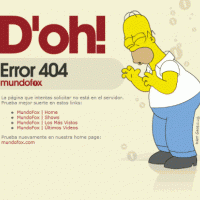
Forced and Unforced Errors.
Using sports language in chess a player who makes more unforced errors loses. By unforced errors I mean the errors that a player makes due to lack of class or experience that most grandmasters will spot right away as weak moves. When a grandmaster plays an expert or a master over the span of the game a lower ranked player will make more unforced errors in most cases. Grandmasters do not need to win by outcalculating a lower ranked player, or by creating some brilliancy, they just need to wait out by simply keeping the game going. In other words give the opponent the chance to go wrong.
However, what do you do when a much lower opponent plays brilliantly and completely outplays you and to you it looks like it is time to resign? Today’s game is an example of this situation, when GM Kachieshvili, playing black ended up in a really bad endgame against 2200-ranked Feinstein. This is the position from the game that we will look at today:
Looking at the position one can guess that this is about time to try to force the opponent to make errors. In tennis this would be to get the opponent out of position. In chess this can be done also over the board. First of all, you can try getting the opponent out of their comfort zone by simply changing the picture of the game: sacrificing something, exchanging pieces, changing the pawn structure. This should be done carefully, in order not to lose right away. Another way is to play faster and to give the opponent the chance to get into time trouble. There is mental pressure too; you can try to prolong the game by sticking to passive defense as long as possible, so the opponent gets tired.
What I would not advise is behaving poorly at the board. I was a witness to a game during the Chicago Open where a 2400 player was going down to a 2100 player. He was two pawns down in a queen endgame and it looked like it was over but then he started to use psychological pressure to distract his opponent. First, he claimed a draw by three-fold repetition, while not keeping the score and after making his move: of course the TD did not uphold his claim. Then he was shuffling his pen back and forth, after which he opened his phone, which shined with red lights. His opponent reacted by pointing out that the phone is not allowed to be turned on in the tournament room and continued to play. The game entered the 6th hour of play. As I was absorbed by my hopeless position, I missed the part where queens were traded and then the 2100 realized with horror that the pawn endgame was a draw. This was unbelievable and I guess all the tricks that the 2400 player used in the end payed off if winning is the ultimate goal, and if integrity and respect for the opponent do not count.
I have not yet seen how Kacheishvili managed to accumulate all the forced and unforced errors needed to lead this game to victory, however I played out this position with white and to me it looked like it should not be much trouble to realize the extra pawn.
The important ideas learned from the game:
- Having a few minutes left for two moves before time control might be a perfect environment for an error. White had to go against the stereotype of not changing the picture of the game when in time trouble and when having an advantage. White also had to evaluate the position resulting after the d6-pawn falls and had to realize that the white king gets to the kingside faster.
- Waiting for the time trouble to pass worked too in this position. Although, it benefited the GM as the position remained complicated, which increased the chances of the unforced errors of a lower rated player.
- Chasing after beauty on move 41 was fruitless as the white king did not enter the game at the right time.
Next week we will continue with the same position. Let me know your thoughts on forced and unforced errors and chess methods to force an opponent to commit error; I would be glad to read them in the comments section.






